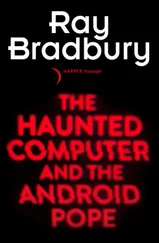Indeed, his reputation almost precedes him, for he is a man with a past—a past that involves one of the more notorious and romantic episodes from technological folklore of the 1970s.
This is one of the few profiles in this book that are not based on years of friendship or extensive personal interviews. Frankly, I’m a little wary of approaching John for a direct interview, especially after hearing what he did to a couple of journalists I know. There is apparently a kind of informal Draper initiation ritual that all interviewers must survive before they get anything out of him. One of the journalists who suffered through a Draper interview agreed to describe the legendary ceremony, with the understanding that I wouldn’t use his name.
“Fifteen minutes after I met John Draper,” my journalist friend told me, “he ordered me to assume an anatomically questionable position.”
What this friend meant was that Draper asked him if he wanted to “help out with some stretching exercises.” That in turn meant that my friend had to take off his own shirt and shoes and get down on his hands and knees on the floor of John’s apartment. Then John got on my friend’s back, threw a full nelson, and barked orders into his ears. Such was a typical Draper interview, but it turns out that the Draper treatment is a form of amateur chiropractic. He has a bad back, and he actually does go through various calisthenics and contortions every day.
But nobody had fully explained this to my friend: “By the time it sank in that somebody who I had been warned was rather eccentric was taking it upon himself to debug my spine, I was duckwalking around the room, carrying out odd instructions barked into my ear by this big sweaty guy with an itchy beard. I knew that programmers can be weird, but it had never come to this.” My friend survived the initiation, conducted his interview, but canceled his plans for a second conversation.
Draper is intimidating enough without direct physical contact. I’ve seen him at Computer Faires and trade conventions over the years, and I can vouch for the fact that his appearance alone can unnerve the unprepared: A gray-flecked tangle of dark hair and beard frame his famous gap-toothed grin; ice-blue eyes focus an inch and a half into your forehead when he talks to you. If you remember the face of Blackbeard the pirate or Long John Silver, and if you can imagine one of those fellows wearing slightly skewed eyeglasses, then you’ll be able to recognize John Draper.
Then there’s the matter of John’s personal communication style. Expansive gestures often accompany his words. He has been known to raise his voice, which is pitched at a particularly piercing frequency range. He doesn’t lack for strong opinions. And if anybody within 200 yards lights a cigarette cigar, or pipe, watch out. He’s allergic to tobacco smoke and is not too shy to say something about it.
Draper is definitely a graduate of the “take it apart and see how it works” school of computer wizardry, rather than the rarified heights of MIT’s or Stanford’s computer science department. But programming was really his second career. The escapades that brought him notoriety, if not financial rewards, took place long before the Altair era and involved the global telecommunications network rather than anything as simple as a personal computer.
Before he became reknowned as “Cap’n Software,” the programmer of the late 1970s who was involved in one of the major software deals sin the history of the microcomputer software industry, Draper was known only as “Cap’n Crunch,” techno-anarchist hero of an entire subsect of the technological underground: the phone phreaks. Although he had been a legend in phreak circles since the late 1960s, his saga as Cap’n Crunch wasn’t told to a general audience until 1971, when a journalist named Ron Rosenbaum wrote an article for Esquire entitled “Secrets of the Little Blue Box.” Rosenbaum described the antics of an electronic genius in California who performed strange and technically illegal pranks through which, by means of a device known as a “bluebox,” he was able to gain access to the telephone system free of charge.
Years later, Draper still claims that his motives for his former activities were unjustly misunderstood. He’s not an anarchist or a vandal, he has always maintained. He just likes to learn how complicated systems work and is driven to find out how to control the activities of these systems—whether they are electronic systems, software systems, or telephone systems. Unfortunately, in 1974, Federal judges didn’t agree with John’s interpretation of his motives, so Draper temporarily moved into Federal correctional facilities.
But long before that time, Cap’n Crunch was just one—albeit the most well known—of thousands of “phone phreaks who for years conversed over their own clandestine communication system that just happened to make use of Ma Bell’s own vast network. Their very existence stemmed from their urge to tinker, which was in turn stimulated by something as accessible, complex, mysterious, and vast as the telephone system. That they could even learn how that system worked came about as a result of their discovery of forbidden knowledge about a technical loophole in the telephone system’s security. Nearly thirty years ago, AT&T made the long-term multibillion-dollar decision to base its long-distance switching system on a series of audible tones. These tones, which triggered various internal switching devices, were based on a series of specific frequencies. Unfortunately, an article in a technical journal divulged the frequencies of the control tones.
An unusual group of people, having read the article, began to take advantage of this technological vulnerability, apparently independently of one another—at first. A mutant variety of the kind of adolescent boy who is likely to fiddle with soldering irons and ham radio outfits, the first phone phreaks made clever use of tape recorders and electric organs to facilitate entry to the switching system. By knowing when and how to enter the right tone into their home telephones, these electronic trespassers were able to “phreak around” the network and to learn how it worked. Soon, those phreaks with electronics skills began building tone generators.
The person who is universally acknowledged to be the founding phreak, predating even Cap’n Crunch, was a blind young man with perfect pitch who whistled into the phone and thus gained access to virtually any telephone in the world, free of charge. Joe Engressia was his name. His dream in life was to work for Ma Bell. In fact, he liked to tell her about flaws in her system—a bit of outlaw gallantry that eventually led to his legal downfall. In fact, the first phone phreaks considered themselves to be harmless, and for the most part even helpful. They liked having the system function perfectly, and they liked to help the phone company fix any bugs they found. Many of them, curiously, were blind. The more aggressive phreaks, however, were bringing down the heat.
In the late 1960s, Cap’n Crunch himself got his name from a breakfast cereal that offered a toy whistle as a premium. The sound produced by the whistle was coincidentally close to a pure 2600 cycle tone, and as every phreak who ever thumbed a bluebox knows, 2600 cycles is the most important of the control tones needed to build one’s own shadow network within the international switching system. When he was an Air Force electronic engineer stationed overseas, John Draper started using his whistle to talk to his friends back in the States, toll free. But free phone calls to friends weren’t his biggest goals. He wanted to learn the ins and outs of the wonderfully complicated global switching system.
When he got out of the Air Force, the Cap’n got full-tilt into phreaking, driving around northern California in a van crammed with electronic equipment and performing late-night experiments from public telephone booths. He set up complex, satellite-linked, global communications circumnavigations in order to talk to himself from adjacent phone booths in remote areas. Or he would call public telephones in faraway places. What’s happening at the American Embassy in Moscow? Who’s passing by a phone booth in London? What’s the weather like in Uruguay? The object was not to make free phone calls. The goal was to play the communications network like a musical instrument, to reprogram it as if it were a giant computer that he could command from any telephone.
Читать дальше










